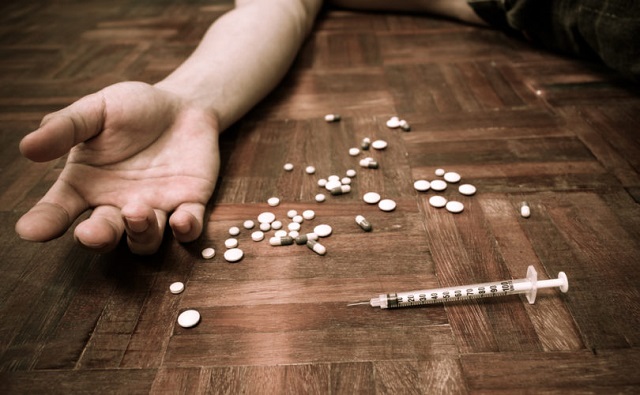Community
Is Downtown Red Deer Safe?
Hey everyone,
Do you feel safe in downtown Red Deer?
The other evening I was having a very serious conversation with my wife about her plan to jog from our house to the downtown Rec Centre. She wanted to leave at 7am and head down the Ross St Hill. This time of year the sun comes up around 7:30am. So the plan was for her to make most of the journey in the dark.
Imagine the route that you would take. What would it be like? Would you be able to see? Of course you could, because there are plenty of street lights. Would there be a lot of traffic? Probably, since that is the time of day everyone heads to work. Would you see street people? There’s a good chance; the shelters make everyone head out early in the morning and the streets are where the people must go.
During the course of our conversation we talked about all sorts of these variables, from what side of Ross St is “safer” to which road has better lighting 48th Ave or 47th Ave.
If you ask an expert on Crime Prevention Through Environmental Design (CPTED) they may inform you about the Broken Window Theory. Where there’s a “broken window” that goes unrepaired there will be more crime because our behaviour is influenced by visual cues in our environment that tell us what behaviours are acceptable and what aren’t. Well, in this regard I’d say that Red Deer does pretty well. Our streets are in good repair, litter gets cleaned up well and there aren’t too many boarded up old shacks in our downtown.
I hear the issue of downtown safety come up a lot and for all the challenges we still have, I want to say that things are improving, but it is really hard to measure. Did the Little Gaetz revitalization make that area better for business? Yes. Do all the new back alley murals improve the perception of safety? Absolutely. Do continued efforts from the Downtown Business Association to attract cultural events keep things in a positive direction? Definitely.
For all the positive momentum we have in downtown Red Deer, it’s not all on the up and up. The closure of the day shelter effectively displaced a large group of people who now have even fewer options for daytime activity, showers, storage, laundry etc. It is better for everyone in our community when we take care of the most vulnerable people. We can not lose sight of our resolve to end homelessness and must continue to find innovative ways to put action into ideology.
I am thrilled that Hudsons, near the Ross St Patio, is thriving! Our downtown is benefiting from having more nightlife. I hope this trend continues and that our downtown becomes a destination; a place to arrive to not just drive through. The transition from a “9-5 downtown” which empties out every evening to a “24-7 downtown” which has exciting nightlife and positive energy no matter what the hour, is happening.
On a similar tone, the Riverlands redevelopment is gearing up and in the near future we will see the influx of many new residents into our downtown. I am pleased that the plan to sprawl our city outwards is being balanced by the foresight to grow our city inwards and upwards.
We Red Deerians have a lot to be grateful for. Our community is prosperous, vibrant and, dare I say, safe(er). FYI, my wife ended up driving to the Rec Centre; mostly because it was a cold September morning and not because she was afraid for her life. Now if only optimism was worth its weight in gold.
Cheers,
Would you go for a pre-sunrise, downtown Red Deer jog?
Do you think the downtown is getting safer?
Community
SPARC Red Deer – Caring Adult Nominations open now!

Red Deer community let’s give a round of applause to the incredible adults shaping the future of our kids. Whether they’re a coach, neighbour, teacher, mentor, instructor, or someone special, we want to know about them!
Tell us the inspiring story of how your nominee is helping kids grow up great. We will honour the first 100 local nominees for their outstanding contributions to youth development. It’s time to highlight those who consistently go above and beyond!
To nominate, visit Events (sparcreddeer.ca)

Addictions
‘Harm Reduction’ is killing B.C.’s addicts. There’s got to be a better way

From the Frontier Centre for Public Policy
B.C. recently decriminalized the possession of small amounts of illicit drugs. The resulting explosion of addicts using drugs in public spaces, including parks and playgrounds, recently led the province’s NDP government to attempt to backtrack on this policy
Fuelled by the deadly manufactured opioid fentanyl, Canada’s national drug overdose rate stood at 19.3 people per 100,000 in 2022, a shockingly high number when compared to the European Union’s rate of just 1.8. But national statistics hide considerable geographic variation. British Columbia and Alberta together account for only a quarter of Canada’s population yet nearly half of all opioid deaths. B.C.’s 2022 death rate of 45.2/100,000 is more than double the national average, with Alberta close behind at 33.3/100,00.
In response to the drug crisis, Canada’s two western-most provinces have taken markedly divergent approaches, and in doing so have created a natural experiment with national implications.
B.C. has emphasized harm reduction, which seeks to eliminate the damaging effects of illicit drugs without actually removing them from the equation. The strategy focuses on creating access to clean drugs and includes such measures as “safe” injection sites, needle exchange programs, crack-pipe giveaways and even drug-dispensing vending machines. The approach goes so far as to distribute drugs like heroin and cocaine free of charge in the hope addicts will no longer be tempted by potentially tainted street drugs and may eventually seek help.
But safe-supply policies create many unexpected consequences. A National Post investigation found, for example, that government-supplied hydromorphone pills handed out to addicts in Vancouver are often re-sold on the street to other addicts. The sellers then use the money to purchase a street drug that provides a better high — namely, fentanyl.
Doubling down on safe supply, B.C. recently decriminalized the possession of small amounts of illicit drugs. The resulting explosion of addicts using drugs in public spaces, including parks and playgrounds, recently led the province’s NDP government to attempt to backtrack on this policy — though for now that effort has been stymied by the courts.
According to Vancouver city councillor Brian Montague, “The stats tell us that harm reduction isn’t working.” In an interview, he calls decriminalization “a disaster” and proposes a policy shift that recognizes the connection between mental illness and addiction. The province, he says, needs “massive numbers of beds in treatment facilities that deal with both addictions and long-term mental health problems (plus) access to free counselling and housing.”
In fact, Montague’s wish is coming true — one province east, in Alberta. Since the United Conservative Party was elected in 2019, Alberta has been transforming its drug addiction policy away from harm reduction and towards publicly-funded treatment and recovery efforts.
Instead of offering safe-injection sites and free drugs, Alberta is building a network of 10 therapeutic communities across the province where patients can stay for up to a year, receiving therapy and medical treatment and developing skills that will enable them to build a life outside the drug culture. All for free. The province’s first two new recovery centres opened last year in Lethbridge and Red Deer. There are currently over 29,000 addiction treatment spaces in the province.
This treatment-based strategy is in large part the work of Marshall Smith, current chief of staff to Alberta’s premier and a former addict himself, whose life story is a testament to the importance of treatment and recovery.
The sharply contrasting policies of B.C. and Alberta allow a comparison of what works and what doesn’t. A first, tentative report card on this natural experiment was produced last year in a study from Stanford University’s network on addiction policy (SNAP). Noting “a lack of policy innovation in B.C.,” where harm reduction has become the dominant policy approach, the report argues that in fact “Alberta is currently experiencing a reduction in key addiction-related harms.” But it concludes that “Canada overall, and B.C. in particular, is not yet showing the progress that the public and those impacted by drug addiction deserve.”
The report is admittedly an early analysis of these two contrasting approaches. Most of Alberta’s recovery homes are still under construction, and B.C.’s decriminalization policy is only a year old. And since the report was published, opioid death rates have inched higher in both provinces.
Still, the early returns do seem to favour Alberta’s approach. That should be regarded as good news. Society certainly has an obligation to try to help drug users. But that duty must involve more than offering addicts free drugs. Addicted people need treatment so they can kick their potentially deadly habit and go on to live healthy, meaningful lives. Dignity comes from a life of purpose and self-control, not a government-funded fix.
Susan Martinuk is a senior fellow at the Frontier Centre for Public Policy and author of the 2021 book Patients at Risk: Exposing Canada’s Health Care Crisis. A longer version of this article recently appeared at C2CJournal.ca.
-

 Business1 day ago
Business1 day agoDon’t be fooled by high-speed rail
-

 Addictions1 day ago
Addictions1 day agoBritish Columbia should allow addicts to possess even more drugs, federal report suggests
-

 Censorship Industrial Complex2 days ago
Censorship Industrial Complex2 days agoNow We Are Supposed to Cheer Government Surveillance?
-

 Business1 day ago
Business1 day agoUN plastics plans are unscientific and unrealistic
-

 Alberta1 day ago
Alberta1 day agoAlberta rejects unconstitutional cap on plastic production
-

 Censorship Industrial Complex23 hours ago
Censorship Industrial Complex23 hours agoAustralian politicians attack Elon Musk for refusing to remove video of Orthodox bishop’s stabbing
-

 Alberta2 days ago
Alberta2 days agoRed Deer Doctor critical of Alberta’s COVID response to submit report to Danielle Smith this May
-

 Business1 day ago
Business1 day agoTaxpayers criticize Trudeau and Ford for Honda deal







